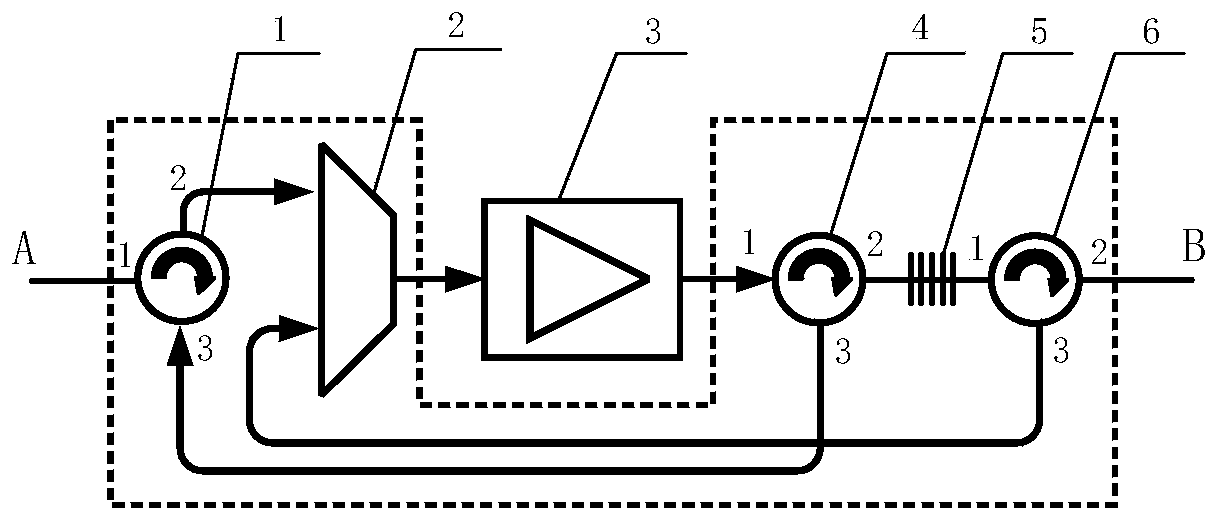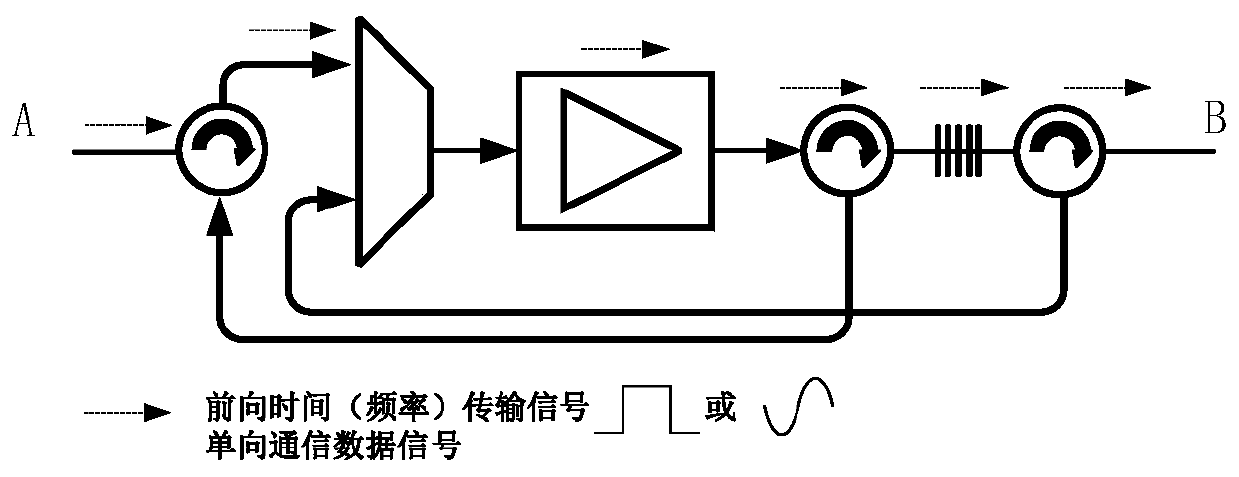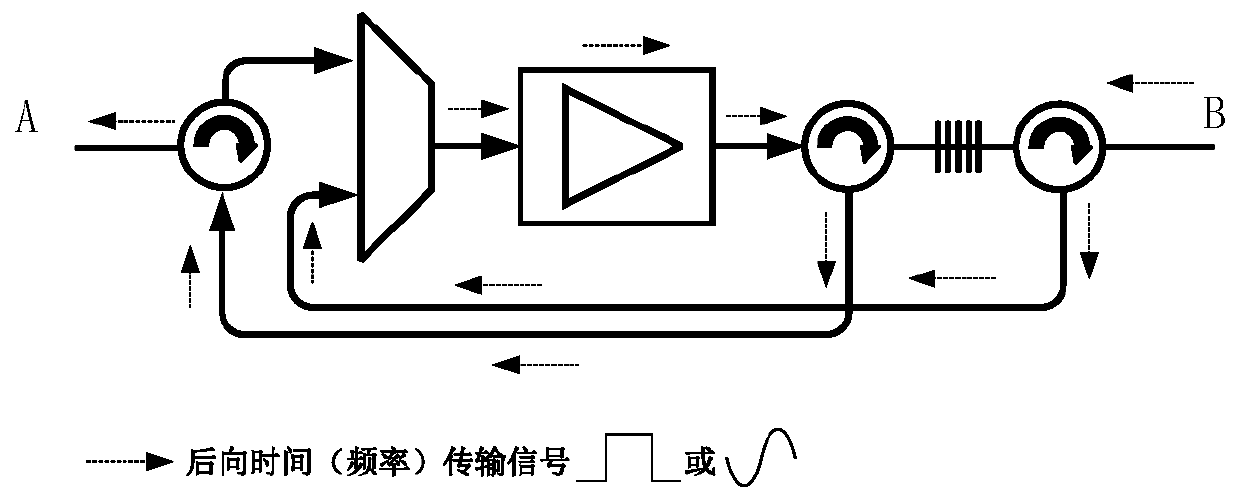Bidirectional optical amplification device based on wavelength division multiplexing transmission
A technology of wavelength division multiplexing and amplifying device, applied in wavelength division multiplexing system, optical fiber transmission, multiplexing communication, etc., can solve the problems of limiting time and frequency transfer performance, deteriorating the received signal-to-noise ratio, increasing system cost, etc.
- Summary
- Abstract
- Description
- Claims
- Application Information
AI Technical Summary
Problems solved by technology
Method used
Image
Examples
Embodiment 1
[0027] Such as figure 1 As shown, this embodiment includes a first optical circulator 1, a wavelength division multiplexer 2, a one-way optical amplifier 3, a second optical circulator 4, a fiber grating 5 and a third optical circulator 6; the first optical circulator The first end of the shaper 1 is connected to the A port, and the second end is connected to the second multiplexing input end of the wavelength division multiplexer 2; the multiplexing output end of the wavelength division multiplexer 2 is connected to the single Connect to the input end of optical amplifier 3; The first end of described second optical circulator 4 is connected with the output end of described unidirectional optical amplifier 3, and the second end is connected with the first end of described fiber grating 5, the first end Three ends are connected with the third end of the first optical circulator 1; the second end of the fiber grating 5 is connected with the first end of the third optical circul...
Embodiment 2
[0033] The structure of this embodiment is the same as that of Embodiment 1, except that the forward transmission of the one-way communication service signal uses an optical wavelength of 1550.92nm, so that the time / frequency signal and the one-way communication service signal can be simultaneously transmitted forward; figure 2 As shown, the forward transmission process of the time / frequency signal and the one-way communication service signal in this embodiment is the same as the forward transmission process of the time / frequency signal in Embodiment 1; image 3 As shown, the backward transmission process of the time / frequency signal in this embodiment is the same as the backward transmission process of the time / frequency signal in Embodiment 1.
Embodiment 3
[0035] The difference between this embodiment and Embodiment 1 is that the time signal for forward transmission uses an optical wavelength of 1550.12 nm, the frequency signal for forward transmission uses an optical wavelength of 1550.92 nm, and the one-way communication service signal for forward transmission uses an optical wavelength of 1551.72 nm. nm and 1552.52nm, the time signal used for backward transmission uses an optical wavelength of 1549.32nm, and the frequency signal used for backward transmission uses an optical wavelength of 1548.52nm; the reflection wavelength of the fiber grating 5 is 1549.32nm and 1548.52nm; the wavelength division The multiplexer 2 uses a multi-channel combining wavelength division multiplexer with a wavelength interval of 100 GHz, the passable wavelengths of the first multiplexing input end of the wavelength division multiplexer 2 are 1549.32nm and 1548.52nm, the wavelength division multiplexer 2 The two multiplexing input terminals are its ...
PUM
 Login to View More
Login to View More Abstract
Description
Claims
Application Information
 Login to View More
Login to View More - R&D
- Intellectual Property
- Life Sciences
- Materials
- Tech Scout
- Unparalleled Data Quality
- Higher Quality Content
- 60% Fewer Hallucinations
Browse by: Latest US Patents, China's latest patents, Technical Efficacy Thesaurus, Application Domain, Technology Topic, Popular Technical Reports.
© 2025 PatSnap. All rights reserved.Legal|Privacy policy|Modern Slavery Act Transparency Statement|Sitemap|About US| Contact US: help@patsnap.com



